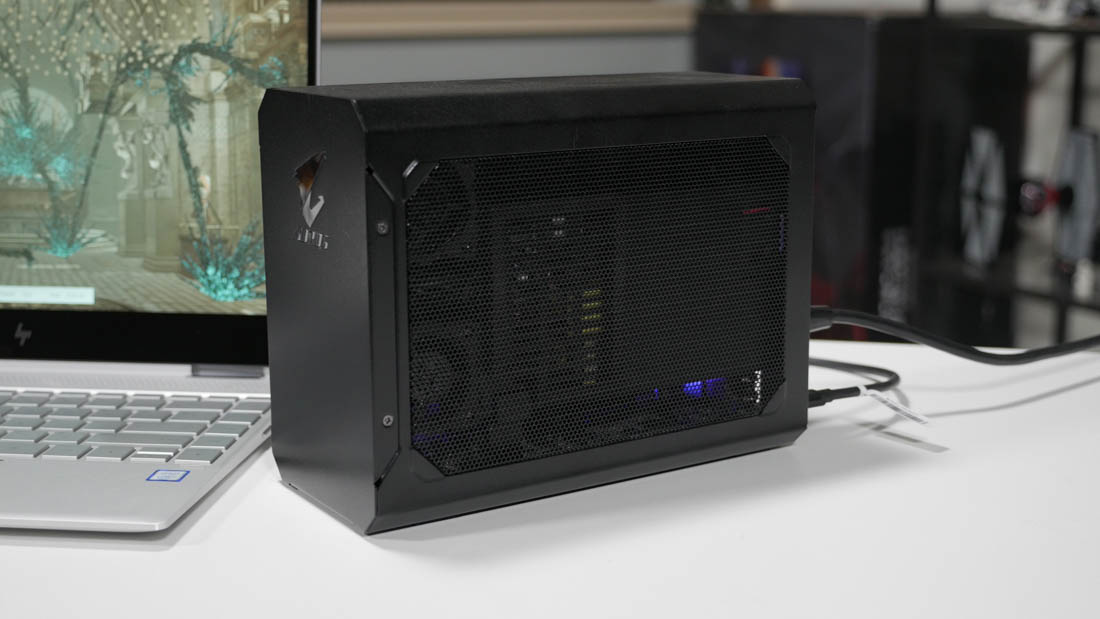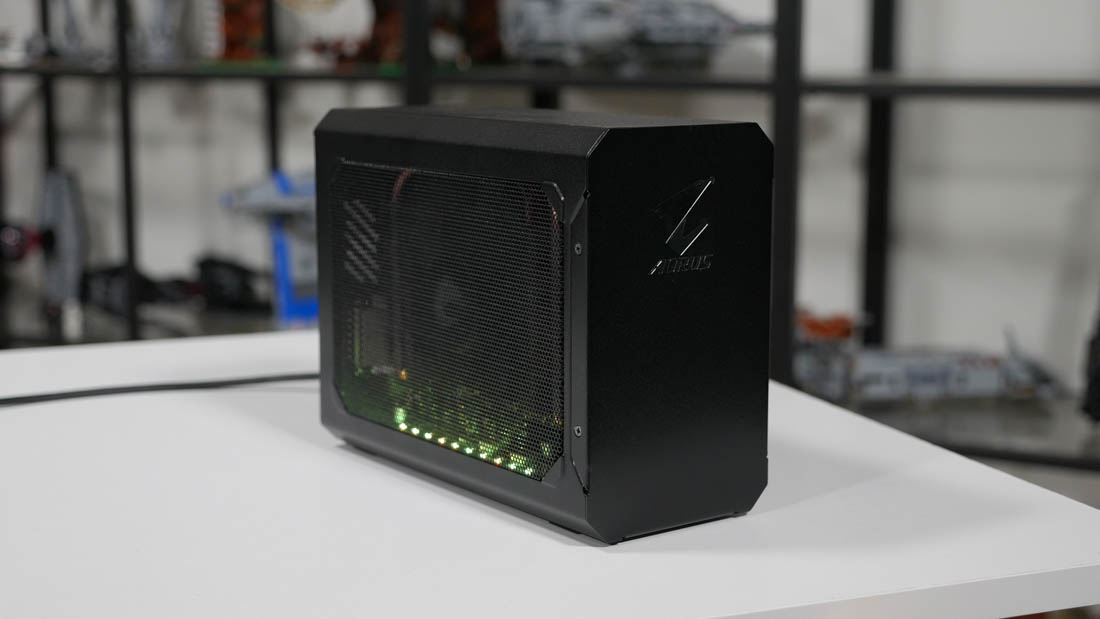External GPU Testing: GTX 1080 in a Box + Core i7-8550U Ultraportable - williamscomentse
Terminal year, we briefly looked at external GPUs when we reviewed the Aorus GTX 1070 Gaming Box attached to a Kaby Lake-powered ultraportable. Now that Intel's 8th gen CPUs are widely available in a range of ultrabooks, with significant performance gains in hand, it's the perfect time to revisit eGPUs and find out whether the hard CPU bottleneck still exists in about games.
As a quick recap, dying meter we tried the GTX 1070 Gambling Box attached to a Lenovo ThinkPad X1 Carbon over Bolt of lightning 3. The Gaming Box does moderate a fully-fledged desktop GTX 1070 GPU, merely the weak Core i5-7200U with just two cores and four threads bestowed a bottleneck in essentially totally games we tested. The eGPU did transform the ThinkPad from a sleek ultraportable into a genuine gambling car with decent enough performance, simply the full power of the GeForce GTX 1070 wasn't unleashed by any unfold.

In fact, the GTX 1070 eGPU + ultraportable laptop combination was typically 30 to 50 percent slower than a traditional GTX 1070 gaming laptop, and could be adequate to 65% slower in CPU-limited titles. Stuttering was also a noticeable issue in some (merely not every) games I tested with, which contributed to slight 1% low framerates.
In about games, when comparison these crucial 1% low results, the GTX 1070 eGPU was slower than a GTX 1060 play laptop, and often away a significant allowance. Again, most of this came down to the Processor bottleneck, and also the bandwidth limitations of Thunderbolt 3. After all, Thunderbolt 3 solitary provides functioning to PCIe 3.0 x4 to the GPU minus some communications protocol operating cost.
So in this eGPU revisit we're continuing the bespeak to find the ultimate portable gaming setup, and upping the ante in two regards:

First, Gigabyte good-hearted swapped out our GTX 1070 Gaming Box for their newer and faster Aorus GTX 1080 Gaming Box. These eGPUs accompany a graphics card installed, and are supposed to retail for just about $700, though with the current GPU shortage and price hikes, these boxes are rarefied. Hopefully, as the artwork circuit card market returns to normal, these boxes will too go many available.
The GTX 1080 Gambling Box is pretty similar to its predecessor, so we're not going to talk much about the design and build because it's basically the same as before. Key things to note are the same compact size up, and that it's still plug-and-represent over Thunderbolt 3. Information technology will also charge your laptop in the process, provided it supports USB Power Delivery.
Even though the early GTX 1080 Gambling Box uses a beefier GPU, and arsenic a answer uses a larger heatsink and sports fan, the loge itself is no louder than the seminal, and doesn't run for observably hotter either. It's impressive that Gigabyte managed to fit a full GTX 1080 and a power supply inside a device this small; it's much littler than some other eGPU enclosures on the market such as the Razer Core.

Second, and above all, we're testing with new ultraportables that use 8th gen Kaby Lake Refreshen CPUs. With foursome cores, eight duds, and Sir Thomas More than a 50% performance leap over the previous generation, there's hope that the fresh CPUs in these laptops will help deal with the CPU bottleneck we originally knowledgeable.
If you want a more detailed review along the operation of the 8Th gen U-series CPUs, check out our full review.
The laptops we in use for eGPU testing are the HP Spectre x360 and the Razer Vane Stealth, some of which habit the Substance i7-8550U, the most commonly used 'stinky-end' 8th gen laptop CPU.

Both have four lanes of PCIe over Thunderbolt 3 -- unlike other laptops that bear right 2 lanes -- and both have 16GB of RAM. The Wraith x360 is configured to use up the default 15W Central processing unit TDP and is a bit thermally constrained, as we explored in our follow-up of the laptop. The Razer Blade Stealing is also a 15W laptop but manages to suffer better clock speeds, in the range of 300 to 400 MHz higher at sure-footed State.
It's important to signalize we tested everything using an external 1080p display hooked upwardly to the GPU showing outputs on the GTX 1080. Operation is noticeably attenuated when sending the display signal back to the laptop's display, and we wanted to avoid any such slowdowns. We recommend anyone provision to use an external GPU to use an external display for gambling purposes, otherwise stuttering and performance losses become a component.
Source: https://www.techspot.com/review/1575-external-gpu-gtx-1080-8th-gen-ultraportables/
Posted by: williamscomentse.blogspot.com


0 Response to "External GPU Testing: GTX 1080 in a Box + Core i7-8550U Ultraportable - williamscomentse"
Post a Comment